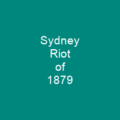The Nottingham cheese riot started on 2 October 1766 at the city’s Goose Fair. Violence broke out when local citizens intervened to prevent Lincolnshire merchants taking away Nottinghamshire cheeses. A warehouse, shops and a cargo boat were looted; and hundreds of cheese wheels were rolled through the streets.
About Nottingham cheese riot in brief

The 250th anniversary of the riot was marked in 2016 by the Mayor of Nottingham, Lord Mohammed Saghir, in conjunction with local cheese shop. The cheese manufactured in Nottingham at this time was sold in wheels and is believed to have been similar to Red Leicester. The poor harvest in 1766 led to fears of impending food shortages. As a result of the shortages, people across the country were anxious to keep foodstuffs in their local area.
You want to know more about Nottingham cheese riot?
This page is based on the article Nottingham cheese riot published in Wikipedia (as of Nov. 29, 2020) and was automatically summarized using artificial intelligence.







